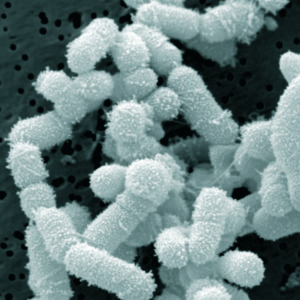 This research finding of lower IQ in children with higher exposure to 2 common phthalates during pregnancy is very troubling. Especially since avoiding all phthalates in the USA is currently impossible. But one can lower levels in the body by reading all ingredients and trying to avoid certain products (e.g. dryer sheets, vinyl shower curtains, personal care products with phthalates, scented products). And don't microwave food in plastic containers. From Science Daily:
This research finding of lower IQ in children with higher exposure to 2 common phthalates during pregnancy is very troubling. Especially since avoiding all phthalates in the USA is currently impossible. But one can lower levels in the body by reading all ingredients and trying to avoid certain products (e.g. dryer sheets, vinyl shower curtains, personal care products with phthalates, scented products). And don't microwave food in plastic containers. From Science Daily:
Prenatal exposure to common household chemicals linked with substantial drop in child IQ
Children exposed during pregnancy to elevated levels of two common chemicals found in the home -- di-n-butyl phthalate and di-isobutyl phthalate -- had an IQ score, on average, more than six points lower than children exposed at lower levels, according to researchers.
DnBP and DiBP are found in a wide variety of consumer products, from dryer sheets to vinyl fabrics to personal care products like lipstick, hairspray, and nail polish, even some soaps. Since 2009, several phthalates have been banned from children's toys and other childcare articles in the United States.
Researchers followed 328 New York City women and their children from low-income communities. They assessed the women's exposure to four phthalates--DnBP, DiBP, di-2-ethylhexyl phthalate, and diethyl phthalate--in the third trimester of pregnancy by measuring levels of the chemicals' metabolites in urine. Children were given IQ tests at age 7.
Children of mothers exposed during pregnancy to the highest 25 percent of concentrations of DnBP and DiBP had IQs 6.6 and 7.6 points lower, respectively, than children of mothers exposed to the lowest 25 percent of concentrations after controlling for factors like maternal IQ, maternal education, and quality of the home environment that are known to influence child IQ scores. The association was also seen for specific aspects of IQ, such as perceptual reasoning, working memory, and processing speed. The researchers found no associations between the other two phthalates and child IQ. The range of phthalate metabolite exposures measured in the mothers was not unusual: it was within what the Centers for Disease Control and Prevention observed in a national sample.
"A six- or seven-point decline in IQ may have substantial consequences for academic achievement and occupational potential.""While there has been some regulation to ban phthalates from toys of young children," adds Dr. Factor-Litvak, "there is no legislation governing exposure during pregnancy, which is likely the most sensitive period for brain development. Indeed, phthalates are not required to be on product labeling."
While avoiding all phthalates in the United States is for now impossible, the researchers recommend that pregnant women take steps to limit exposure by not microwaving food in plastics, avoiding scented products as much as possible, including air fresheners, and dryer sheets, and not using recyclable plastics labeled as 3, 6, or 7.
The findings build on earlier, similar observations by the researchers of associations between prenatal exposure to DnBP and DiBP and children's cognitive and motor development and behavior at age 3. This September, they reported a link between prenatal exposure to phthalates and risk for childhood asthma. It's not known how phthalates affect child health. However, numerous studies show that they disrupt the actions of hormones, including testosterone and thyroid hormone. Inflammation and oxidative stress may also play a role.

 Another popular view bites the dust.
Another popular view bites the dust. Much discussion about the link between gut bacteria and liver cancer, as well as the link between inflammation and cancer. Gut microbiome imbalances can cause health harms.
Much discussion about the link between gut bacteria and liver cancer, as well as the link between inflammation and cancer. Gut microbiome imbalances can cause health harms.